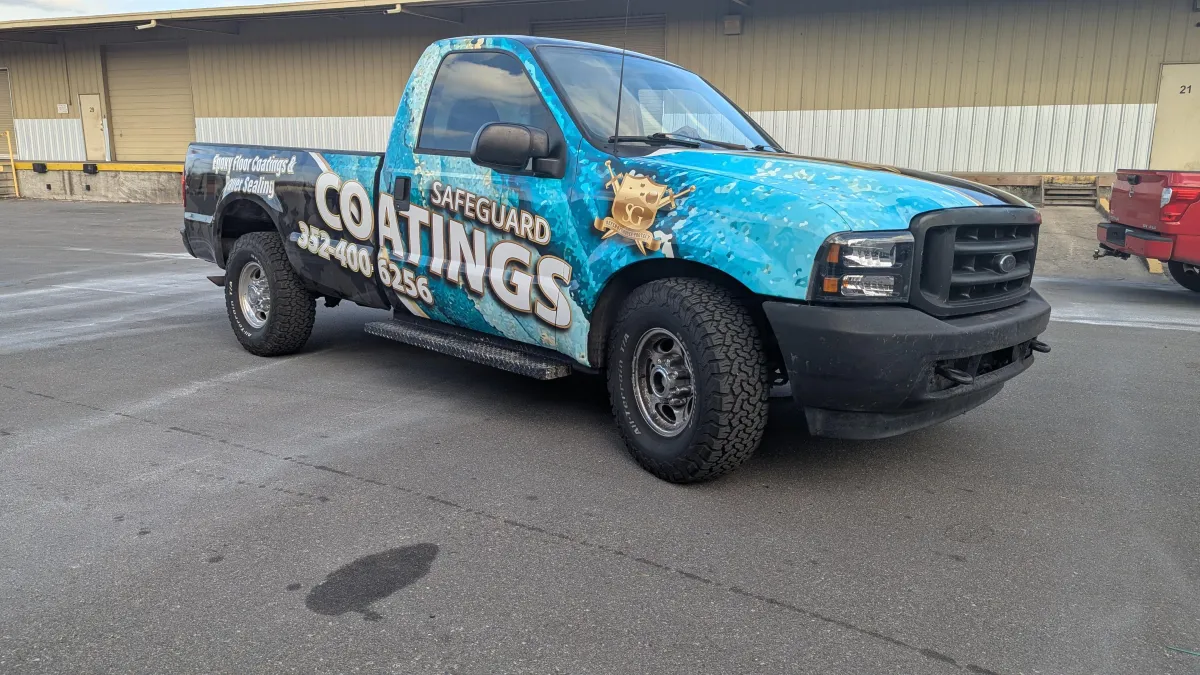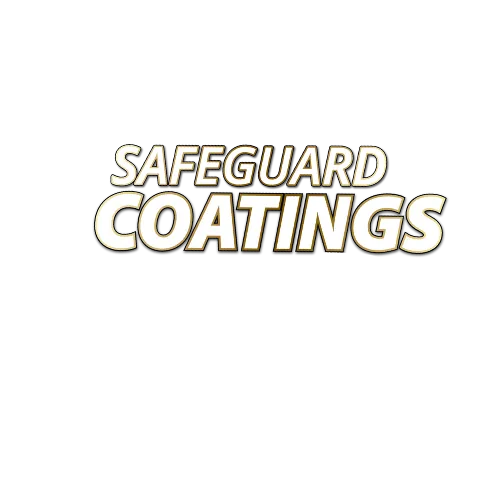
Top 7 Garage Floor Coating Myths—Busted by a Pro Installer in Ocala
Stop Believing These Garage Floor Myths—Here’s What Really Matters
Every week, we talk to homeowners in Ocala who’ve been burned by bad advice. They saw a YouTube video that made epoxy flooring look like a weekend project. Or their buddy swore a $150 kit would hold up to tire heat, tool drops, and Florida humidity.
We get it—there’s a ton of noise out there. But as pros who specialize in garage floor coatings in Ocala, we can tell you this: a lot of what’s said online about epoxy floors is flat-out wrong.
Some of it’s outdated. Some of it’s marketing spin. And some of it is just plain nonsense from people who’ve never touched a grinder or installed a flake system in 95% humidity.
So let’s set the record straight. Here are 7 of the most common myths we hear about garage floor coatings—and what’s actually true when you hire a professional who knows what they’re doing.
Myth #1: “Epoxy Floors Always Peel”
This one is everywhere—and it’s one of the biggest half-truths in the industry.
Yes, epoxy floors can peel. But here’s the real reason why: bad surface prep.
Most of the peeling floors we’re called to fix were installed without proper mechanical grinding. Instead, someone cleaned the concrete with a mop, maybe tossed some acid etch on it, and rolled on a cheap kit.
Without grinding, epoxy has nothing to grip. It bonds to dust and debris instead of the actual slab. Then heat, moisture, or tire friction come along—and the coating starts lifting like old wallpaper.
At Safeguard Coatings, every single garage in Ocala gets diamond-ground concrete prep before we apply a single drop of epoxy. That’s what gives the coating its mechanical bond and keeps it stuck for years—not months.
So yes, floors can peel. But if yours does, it’s not because “epoxy always peels.” It’s because someone cut corners. We don’t.
Myth #2: “Concrete Just Needs to Be Clean—No Need to Grind”
We hear this one a lot, especially from homeowners who’ve been sold a DIY kit or talked to someone doing “cheap epoxy jobs on the side.” The idea is simple: if the floor looks clean, it’s ready for coating. Maybe they even recommend an acid wash or degreaser and call it good.
Here’s the truth: clean does not equal prepared.
You can mop a floor, power wash it, even acid etch it—and still end up with a surface that epoxy can’t bond to. That’s because concrete has a smooth, closed-off surface called the “cream” layer. It doesn’t absorb coatings well, especially not in humid climates like Ocala. It needs to be opened up.
That’s where mechanical grinding comes in. We use diamond grinders to remove contaminants and create a CSP (Concrete Surface Profile) that allows epoxy to physically bond to the slab. Think of it like sanding a table before staining it—skip that step, and nothing sticks.
Without grinding, coatings peel. Period.
At Safeguard Coatings, we never skip this step. It’s the foundation of every long-lasting garage floor we install—and it’s the reason our floors hold up in real-world Florida conditions.
Myth #3: “Garage Coatings Are Too Slippery to Be Safe”
This one makes a lot of homeowners nervous—especially if they’ve got kids, pets, or plan to walk into the garage after a rainstorm. And it’s true: some coatings can be slippery when wet. But that’s only part of the story.
The truth is, slip resistance comes down to how the floor is finished—not the fact that it’s epoxy.
Most DIY kits and bargain-bin contractors leave you with a smooth, high-gloss surface. Sure, it looks shiny. But once you introduce water, oil, or sawdust, it turns into a slip-n-slide. That’s where the myth comes from.
But here’s what professional installers do differently:
We broadcast flake (or quartz) into the coating to add texture.
We add anti-slip media like aluminum oxide or silica into the topcoat.
We adjust sheen levels and traction based on how the space will be used.
At Safeguard Coatings, we tailor the finish for Florida garages. That means your floor can look great, clean up easily, and still have enough grip to walk safely—even with wet shoes or humid conditions.
Slippery floors aren’t about epoxy. They’re about shortcuts. And we don’t do shortcuts.
Myth #4: “It’s Cheaper to DIY—And Just as Good”
On the surface, this sounds reasonable. You walk into a hardware store, see a garage epoxy kit for $150, and think: “Why spend thousands when I can do it myself this weekend?”
But here’s the catch—those kits are built for quick sales, not long-term performance.
Most of them are water-based, low-solids products that go on thin and wear out fast. They don’t come with a proper primer, vapor barrier, or UV-stable topcoat. And unless you already own a diamond grinder (spoiler: you don’t), the surface prep step gets skipped or half-done.
We’ve been called to do-over a ton of DIY garage floors here in Ocala. Peeling, flaking, hot tire pickup, yellowing from sun exposure—it’s the same story every time. By the time homeowners call us, they’ve already spent hundreds on materials, hours of labor, and still need to pay a pro to grind it all off and start from scratch.
When you add it up? DIY is almost always more expensive—in time, money, and headaches.
At Safeguard Coatings, we don’t patch DIY mistakes—we fix them right. And when we install a floor, it stays put.
Myth #5: “You Can Coat Any Floor, Anytime”
This one sounds harmless… until the floor fails.
A lot of people think garage floor coatings are like paint: as long as the surface is clean and dry, you’re good to go. But epoxy isn’t paint. It’s a chemical system that needs specific conditions to cure properly and bond to the concrete.
Here’s what actually matters:
Moisture levels in the slab—if your floor is emitting vapor (which many in Ocala are), coatings won’t stick. We test for this with a concrete moisture meter before every install.
Temperature and humidity—if it’s too hot, too humid, or too cold, your epoxy may cure too fast or not at all. Florida garages need fast-curing systems that work in high humidity.
Concrete age—brand new slabs can’t be coated right away. They need time to cure and outgas.
Previous coatings or sealers—if your concrete has been sealed or painted before, that material must be fully removed before epoxy will bond.
At Safeguard Coatings, we check all of this before we ever mix product. Because doing it “anytime” is a great way to waste your time—and your money.
A great coating isn’t just about what you apply. It’s about when and how you do it.
Myth #6: “Florida Humidity Doesn’t Affect Epoxy”
This one usually comes from manufacturers trying to sell “all-weather” DIY kits—or from contractors who don’t understand what epoxy is actually doing during cure.
Here’s the truth: Florida humidity absolutely affects epoxy—and ignoring it is a recipe for failure.
When you apply epoxy in a high-humidity environment like Ocala, a few things can go wrong fast:
Condensation can form on the slab, especially in the mornings. Even if it “looks dry,” a thin layer of moisture can prevent proper bonding.
Moisture vapor rises through the slab. If it isn’t tested and managed, it can cause bubbles, blisters, and delamination after install.
Improper cure rates. High humidity and heat can cause certain epoxies to flash cure (dry too fast), resulting in a brittle or uneven finish.
At Safeguard Coatings, we know Florida conditions are different. We use epoxy and polyaspartic systems that are formulated to work with our climate, not against it. And we always test for moisture and ambient conditions before we begin.
You can’t ignore the weather in Ocala—and you definitely can’t ignore it when installing a garage floor coating.
Myth #7: “All Garage Floor Coatings Are Basically the Same”
If you’ve been shopping around, you’ve probably noticed a huge range in pricing—and it’s tempting to think, “Well, a coating is a coating, right?”
Wrong.
There’s a massive difference between the products sold in big-box stores, the quick-fix kits advertised online, and the professional-grade materials used by companies like Safeguard Coatings.
Here’s what actually varies:
Solids content: Cheap kits are often 30–50% solids. That means half of what you’re applying evaporates. We use 100% solids epoxy, so what you see is what you get—thick, durable, and built to last.
UV stability: Most DIY and low-end coatings will yellow or chalk in Florida sunlight. Ours include UV-stable topcoats that protect against fading and breakdown.
Cure time & strength: Some coatings take days to cure and never fully harden. Ours cure quickly and harden to industrial-grade durability.
System design: A real garage coating is a multi-layer system—primer, basecoat, broadcast media (flakes or quartz), and topcoat. One-coat wonders? They’re called that for a reason.
So no—garage floor coatings are not all the same. The difference isn’t just in how they look on Day One—it’s how they perform on Day 300, 600, or 1,200.
If you want your floor to hold up, don’t shop by price tag. Shop by system, process, and experience. That’s where Safeguard Coatings comes in.
So… What Does Make a Garage Floor Coating Last?
By now, you’ve probably noticed the common thread running through all seven myths: bad installs, bad products, and bad advice. That’s what gives garage floor coatings a bad name—not the material itself.
When done right, an epoxy or polyaspartic floor doesn’t peel, fade, or wear out after a year. It bonds to the slab, handles Florida’s heat and humidity, and looks clean and sharp for years with minimal maintenance. The problem is, most coatings aren’t done right.
So what actually makes a garage floor coating worth your money?
A properly prepped surface (diamond grinding—not acid wash)
Moisture testing and climate-conscious install timing
100% solids epoxy and UV-stable topcoats
A layered system, not a one-coat miracle cure
A professional contractor who knows how to install in Ocala’s unique conditions
That’s the difference between “a floor” and a floor that lasts.
Let Safeguard Coatings Get It Right the First Time
Don’t let bad advice—or worse, a bad install—ruin your garage floor. Whether you’ve been burned by a peeling DIY kit or you’re just ready to invest in something that actually lasts, we’ve got you covered.
At Safeguard Coatings, we install high-performance epoxy and polyaspartic systems built specifically for Ocala’s climate. We handle the prep, the product, and the process—no shortcuts, no guesswork, and no surprises. Just a flawless floor that holds up to Florida life.
Call us at 352-400-6256
Email us at [email protected]
Click here to fill out our contact form
Let’s talk about your garage. We’ll answer your questions, give you a quote, and help you choose the right coating system for how you actually use the space.


